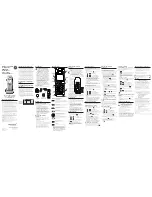
www.balluff.com
7
english
3
Installation (continued)
Rotation angle
Tilt angle
Fig. 3-2: Angle tolerances
3.4
Alignment
The emitter and receiver must be so installed that the light
band strikes as close to the center of the receiver window
as possible. The emitter generates a light band with a
width of approx. 54 mm. The receiver window is 50 mm
wide. When correctly aligned the light band therefore
overhangs the two sides of the receiver window by approx.
2 mm.
3.4.1 Aligning without assistance
Surrounding the receiver window is a white area for better
seeing the light band as well as markings for precise
positioning.
Align the light band so that the laser line is centered on the
receiver window and another 1 to 2 mm of the light band
can be seen on the white screen (see illustration).
Light band edge
Light band edge
Fig. 3-3: Correct alignment
Fig. 3-4: Light band too far to the right
Fig. 3-5: Light band too low
3.4.2 Aligning using electronic assist
Correct alignment can also be verified electronically. In the
main menu select
Device settings
→
Live
(see section
), to display a live image.
Fig. 3-6: Correct alignment
Fig. 3-7: Light band incorrectly aligned, left edge of the CCD not
illuminated
3.4.3 Signal normalizing
Before using the sensor, the light intensity must be
normalized on the receiver. To do this, use the menu item
Device settings
→
Normalize
BLA 50A-002-S4
Balluff Light Array
BLA 50A-002-S4
















































